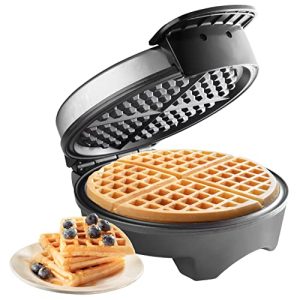
$16.99 $12.99
🔵 Flour for Non-Stick: Lightly flour the rolling pin before rolling out the dough to avoid sticking. This guarantees effortless rolling without tearing the dough.
🔵 Apply even pressure when rolling the dough to maintain uniform thickness throughout. Roll in a back-and-forth motion, beginning in the middle and moving outward.
🔵 Chilling Dough: For some recipes, chilling the dough might help it be easier to handle and less prone to stick to the rolling pin.
🔵 Rolling Surface: Roll out the dough on a surface that is clean, smooth, and lightly dusted with flour. Avoid using too much flour because it will change the consistency of the recipe.
🔵 Cleaning & Maintenance: After usage, give the rolling pin a thorough wash in warm, soapy water.
🔵 Utilize the non-stick surface of the rolling pin and your dough with the least amount of flour possible to prevent sticking and for accurate rolling.
🔵 The dough should be chilled if it is sticky or soft before rolling. By doing this, it keeps its shape and is less likely to stick to the rolling pin.
🔵 Having an even pressure: To obtain uniform dough thickness and a properly rolled surface, roll with even pressure.
🔵 Rotate the Dough: To keep an equal shape and avoid sticking, rotate the dough occasionally as you roll it out.
🔵 The rolling pin should only be washed by hand in warm, soapy water. The non-stick surface shouldn't be protected by utilizing abrasive materials.
🔵 Dry Completely: Dry the rolling pin entirely after washing it before storing it to avoid
 The 5 Best PC Gaming Chairs to Buy in 2024
$119.99
The 5 Best PC Gaming Chairs to Buy in 2024
$119.99
 Sol De Janeiro Cheirosa 62 Perfume Mist 90ml
$24.00
Sol De Janeiro Cheirosa 62 Perfume Mist 90ml
$24.00
 The 5 Best Gaming PC to Buy in 2024
The 5 Best Gaming PC to Buy in 2024
 Stanley 40 oz Quencher h2.0 Flowstate Tumbler
$45.00
Stanley 40 oz Quencher h2.0 Flowstate Tumbler
$45.00
 The Best Gaming Keyboards to Buy in 2024
$49.99
The Best Gaming Keyboards to Buy in 2024
$49.99
 The Best Hair Dryers of 2024
$39.99
The Best Hair Dryers of 2024
$39.99
 Best Microphone For Kids In 2024 | For Both Girls & Boys
Best Microphone For Kids In 2024 | For Both Girls & Boys
 The 6 Best Waffle Makers of 2024 | Waffles for Breakfast
The 6 Best Waffle Makers of 2024 | Waffles for Breakfast
 Best Gaming Headsets with Noise Cancellation Mic In 2024
Best Gaming Headsets with Noise Cancellation Mic In 2024
 Android Smart Watch | Fitness Watch with AI Control
$29.99
Android Smart Watch | Fitness Watch with AI Control
$29.99
